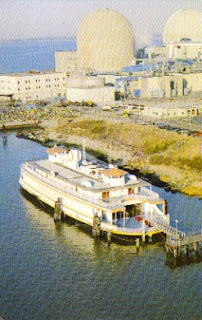RELEASE FROM ENTERGY NUCLEAR FOLLOWS.
-----------------------
Entergy News Release
Entergy Operations, Inc.’s online address is entergy-nuclear.com.
-----------------------
Significant Industrial Accident at Arkansas Nuclear One
Russellville, Ark. – A significant industrial accident occurred at Arkansas Nuclear
One at approximately 7:45 a.m. There has been one confirmed fatality and three additional
injuries. The injured employees have been transported to a nearby hospital. The accident
occurred when a generator stator fell as it was being moved out of the turbine building.
Unit 1 is in a refueling outage and Unit 2, which was operating at full power, automatically
shut down. Both plants are in a stable shutdown condition and there is no danger to the
public. The plant is in an unusual event classification, the lowest of four emergency
classifications designated by the Nuclear Regulatory Commission. Additional staff has
been brought to the site to manage the situation.
Jeff Forbes, executive vice president and chief nuclear officer said, “We are deeply
saddened by what has happened today. Our greatest sympathy is with the family and friends
of the employee who lost his life, and with those who sustained injuries. I also want to
express my sorrow and support to all those who work at Arkansas Nuclear One. I know this
is especially hard on them.”
Entergy News Release
Page 2
Date 3/31/2013
Area residents are requested not to call the plant. Local radio stations are the best
source of up-to-date information and are being provided with the latest information by plant,
federal, state and local officials.
Entergy Corporation, which celebrates its 100th birthday this year, is an integrated
energy company engaged primarily in electric power production and retail distribution
operations. Entergy owns and operates power plants with approximately 30,000 megawatts
of electric generating capacity, including more than 10,000 megawatts of nuclear power,
making it one of the nation’s leading nuclear generators. Entergy delivers electricity to 2.8
million utility customers in Arkansas, Louisiana, Mississippi and Texas. Entergy has annual
revenues of more than $10 billion and approximately 15,000 employees.
Entergy Operations, Inc.’s online address is entergy-nuclear.com.
















